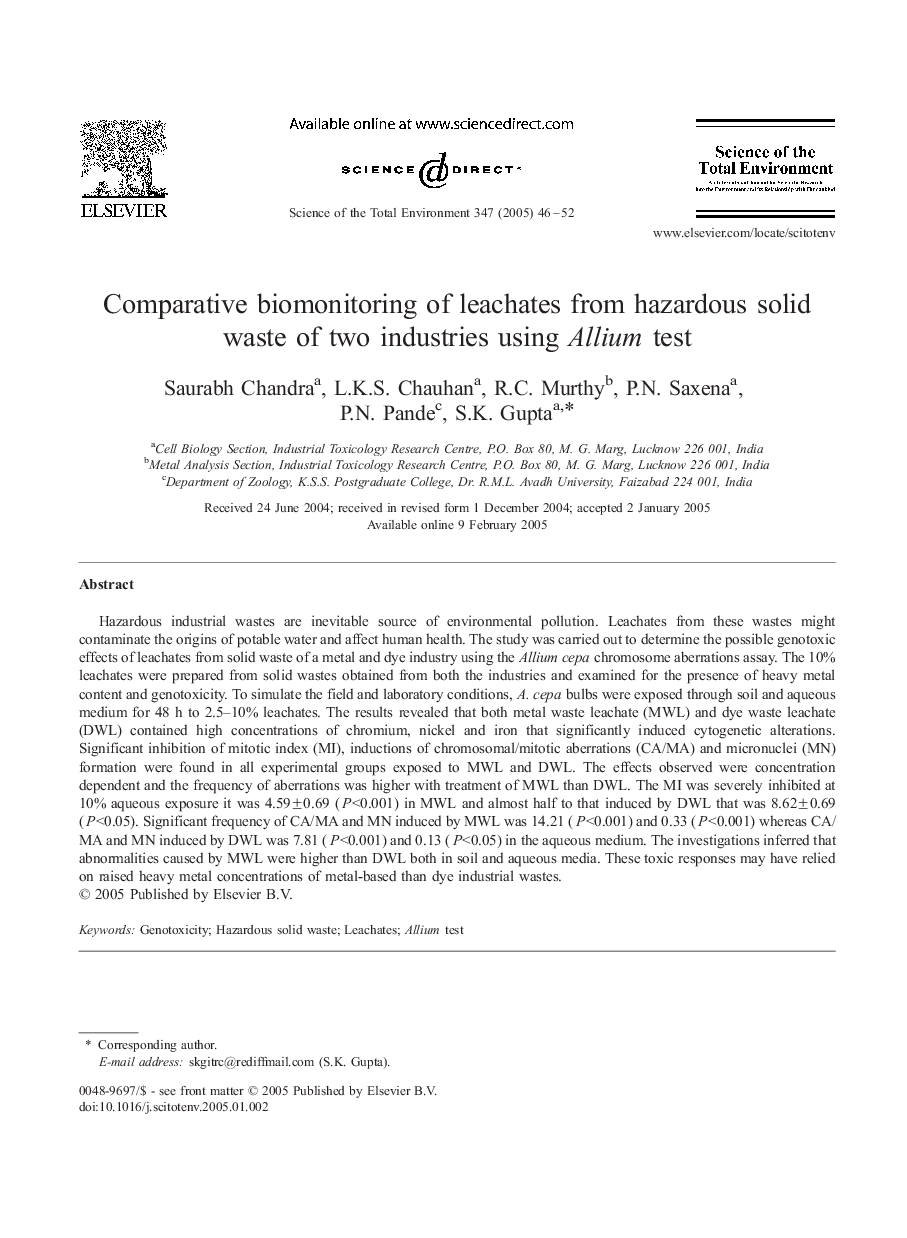| Article ID | Journal | Published Year | Pages | File Type |
|---|---|---|---|---|
| 10110672 | Science of The Total Environment | 2005 | 7 Pages |
Abstract
Hazardous industrial wastes are inevitable source of environmental pollution. Leachates from these wastes might contaminate the origins of potable water and affect human health. The study was carried out to determine the possible genotoxic effects of leachates from solid waste of a metal and dye industry using the Allium cepa chromosome aberrations assay. The 10% leachates were prepared from solid wastes obtained from both the industries and examined for the presence of heavy metal content and genotoxicity. To simulate the field and laboratory conditions, A. cepa bulbs were exposed through soil and aqueous medium for 48 h to 2.5-10% leachates. The results revealed that both metal waste leachate (MWL) and dye waste leachate (DWL) contained high concentrations of chromium, nickel and iron that significantly induced cytogenetic alterations. Significant inhibition of mitotic index (MI), inductions of chromosomal/mitotic aberrations (CA/MA) and micronuclei (MN) formation were found in all experimental groups exposed to MWL and DWL. The effects observed were concentration dependent and the frequency of aberrations was higher with treatment of MWL than DWL. The MI was severely inhibited at 10% aqueous exposure it was 4.59±0.69 (P<0.001) in MWL and almost half to that induced by DWL that was 8.62±0.69 (P<0.05). Significant frequency of CA/MA and MN induced by MWL was 14.21 (P<0.001) and 0.33 (P<0.001) whereas CA/MA and MN induced by DWL was 7.81 (P<0.001) and 0.13 (P<0.05) in the aqueous medium. The investigations inferred that abnormalities caused by MWL were higher than DWL both in soil and aqueous media. These toxic responses may have relied on raised heavy metal concentrations of metal-based than dye industrial wastes.
Keywords
Related Topics
Life Sciences
Environmental Science
Environmental Chemistry
Authors
Saurabh Chandra, L.K.S. Chauhan, R.C. Murthy, P.N. Saxena, P.N. Pande, S.K. Gupta,
